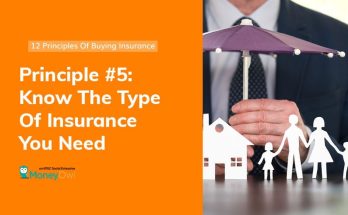Smart living is often associated with convenience, technology, and efficiency—homes that respond to voice commands, apps that streamline daily tasks, and systems that anticipate our needs. But beneath the surface of these innovations lies a deeper principle: intentionality. Smart living is about making choices that support long-term well-being, reduce stress, and create space for what matters most. In this context, insurance emerges as a quiet but essential component. It’s not flashy or immediate, but it reflects a mindset of preparedness, care, and strategic thinking. Insurance, when understood and embraced, is a form of smart living because it protects what you’ve built and allows you to live with greater confidence.
At its core, insurance is a tool for managing uncertainty. Life is full of unpredictable events—accidents, illnesses, natural disasters, and unexpected losses. While we can’t control these occurrences, we can control how we prepare for them. Insurance transforms risk into something manageable. It offers a financial cushion that allows individuals and families to recover without derailing their goals. This kind of foresight is the essence of smart living. It’s the decision to plan for what might happen so that you’re not caught off guard when it does.
Smart living also involves reducing cognitive load. The more we can automate or delegate complex tasks, the more mental space we have for creativity, relationships, and growth. Insurance contributes to this by removing the need to constantly worry about worst-case scenarios. When you know your home is protected, your health expenses are covered, or your income is secured in case of disability, you can focus on living rather than bracing for impact. It’s not about ignoring risk—it’s about integrating protection into your life so that it becomes a source of calm rather than anxiety.
Financial stability is another pillar of smart living, and insurance plays a critical role in preserving it. A single unexpected event can wipe out savings, derail retirement plans, or create long-term debt. Insurance acts as a safeguard, ensuring that your financial foundation remains intact even when life gets messy. For example, a comprehensive auto policy can cover repair costs and liability after an accident, preventing a financial setback. Health insurance can make medical care accessible without compromising other financial priorities. These protections don’t just offer relief—they support continuity, allowing you to stay on track with your financial goals.
Smart living also means making decisions that reflect your values. Insurance is a way of expressing care—for yourself, your family, your business, and your community. It’s a statement that you’re thinking ahead, that you’re willing to invest in security, and that you value peace of mind. This mindset extends beyond personal coverage. Businesses that insure their operations, employees, and assets are demonstrating responsibility and foresight. They’re creating environments where people feel safe and supported, which in turn fosters loyalty and productivity. Insurance becomes part of a broader culture of care and intentionality.
Technology has made insurance more accessible and user-friendly, aligning it even more closely with the principles of smart living. Digital platforms allow users to compare policies, manage accounts, and file claims with ease. Personalized recommendations, real-time updates, and intuitive interfaces make the experience smoother and more transparent. But the smartest use of technology in insurance goes beyond convenience—it enhances understanding. When people can see how their coverage works, what it protects, and how to adjust it as life changes, they become active participants in their own security. That empowerment is a hallmark of smart living.
Education is another key factor. Smart living involves continuous learning and informed decision-making. Insurance, when explained clearly and thoughtfully, becomes a tool for financial literacy. Understanding the difference between term and whole life insurance, knowing what’s covered in a homeowners policy, or recognizing the value of disability insurance are all part of building a smarter, more resilient life. When insurers invest in education—through content, consultations, or interactive tools—they help customers make choices that reflect their needs and aspirations. This kind of engagement turns insurance from a passive purchase into an active strategy.
Smart living also embraces adaptability. Life doesn’t follow a fixed script, and our needs evolve over time. Insurance supports this flexibility by allowing policies to be updated, expanded, or customized. Whether it’s adding coverage for a new home, adjusting health benefits after a career change, or revisiting life insurance after starting a family, insurance adapts to your life’s rhythm. This responsiveness ensures that your protection remains relevant and effective, no matter what stage you’re in. It’s a dynamic approach that mirrors the fluid nature of smart living.
Ultimately, insurance is a form of smart living because it reflects intentionality, supports resilience, and enhances peace of mind. It’s not just about preparing for the worst—it’s about creating the conditions for the best. It allows you to live more freely, plan more confidently, and care more deeply. In a world that values speed and convenience, insurance offers something more enduring: stability. And when that stability is built into your life, everything else becomes easier to navigate. Smart living isn’t just about what you have—it’s about how you protect it, and insurance is one of the smartest ways to do just that.



